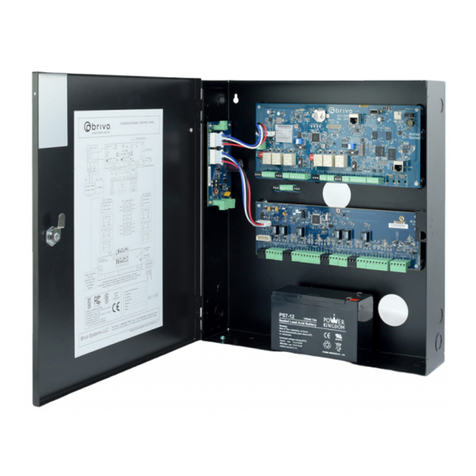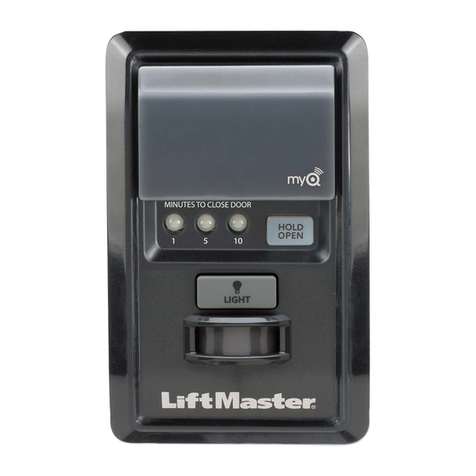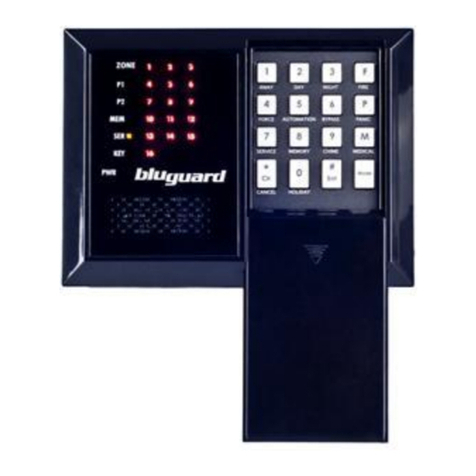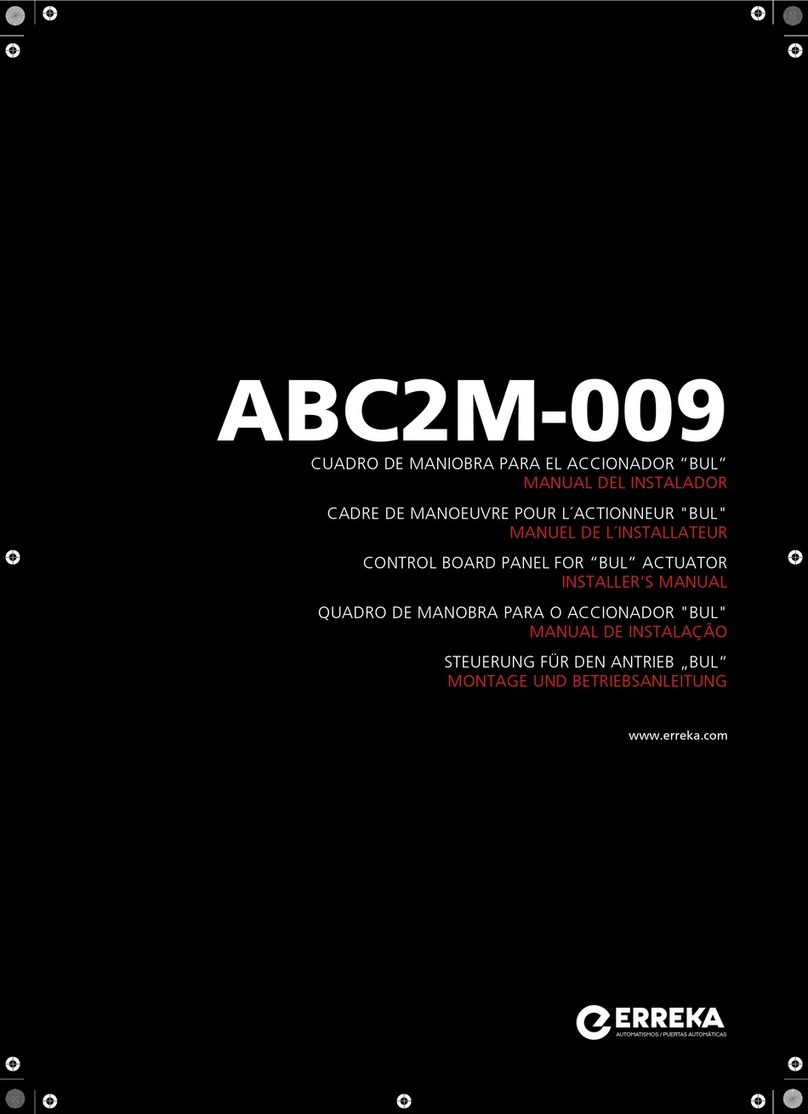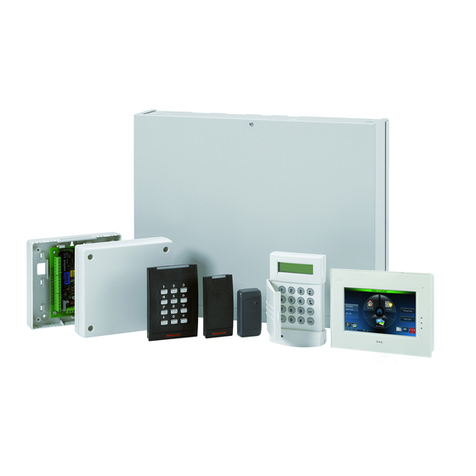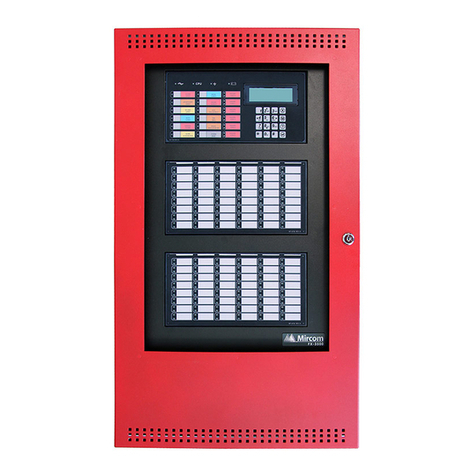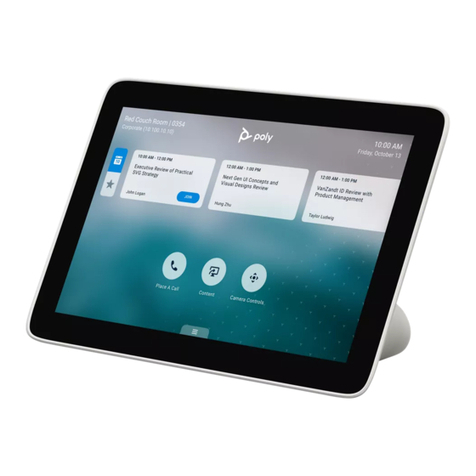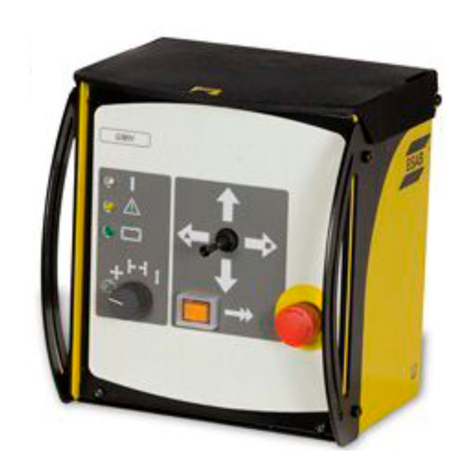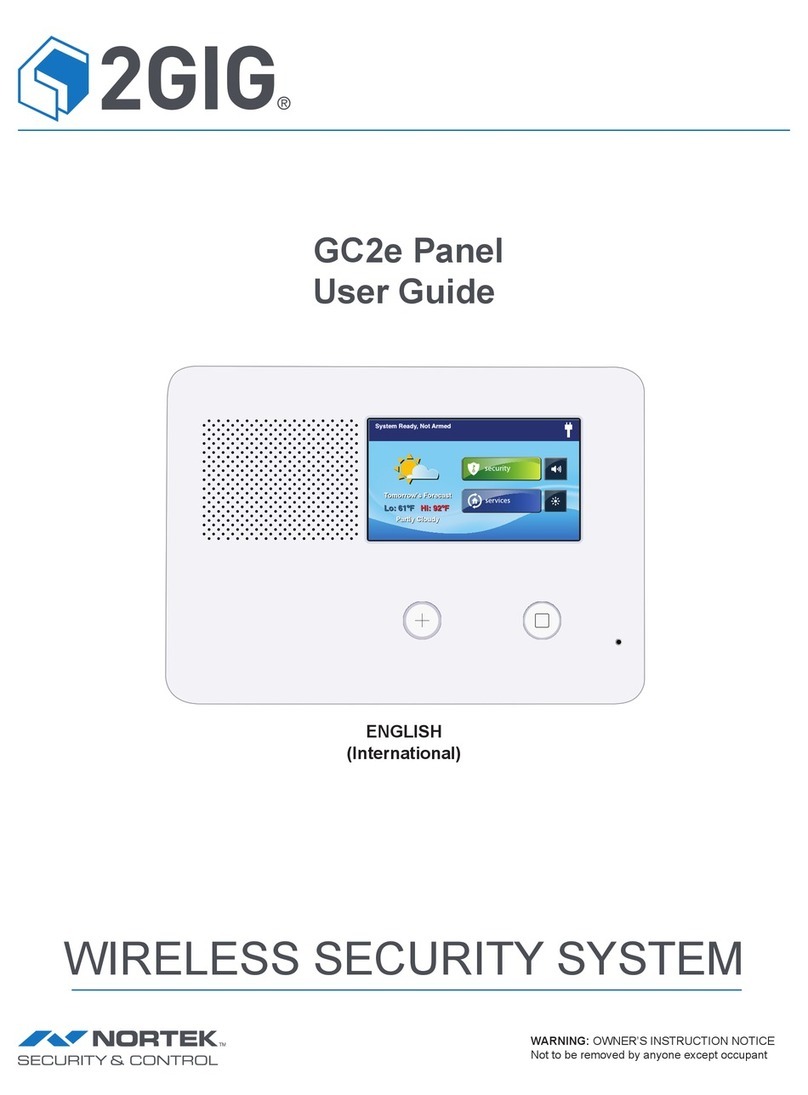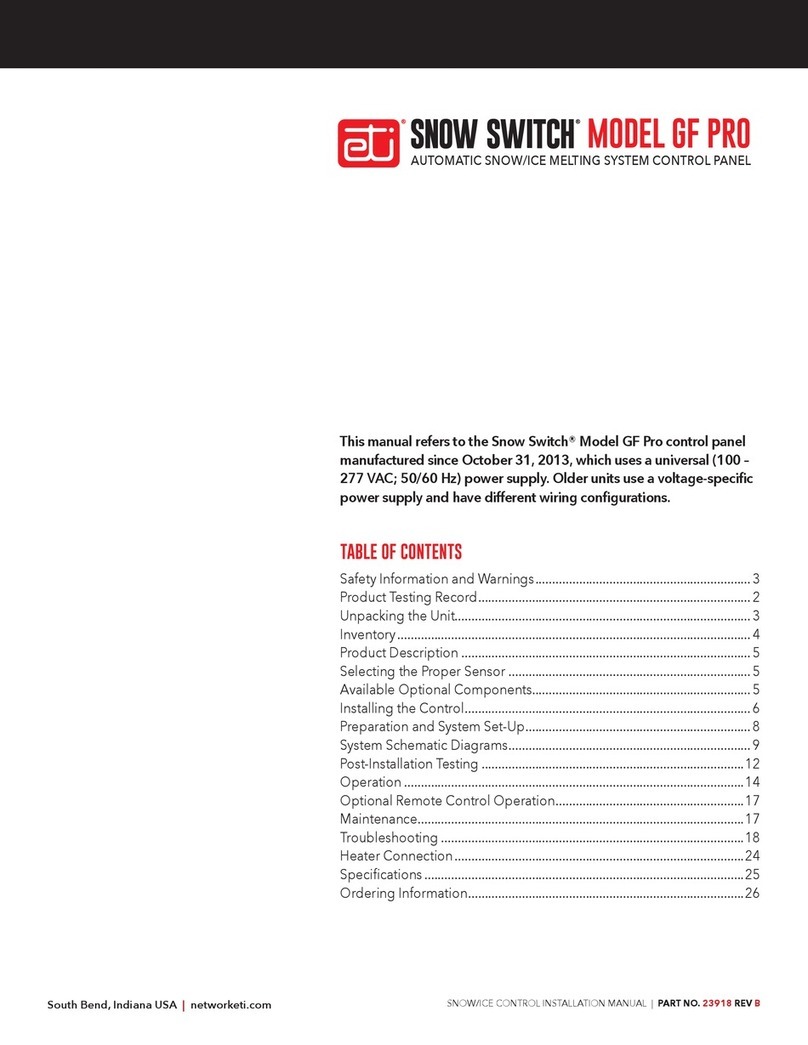Global Fire Gekko Guide

Global Fire Equipment // globalfire.pt
ma_gekko_01_010002_en_190522
GEKKO
Fire Alarm Control Panel
INSTALLATION & COMMISSIONING MANUAL
OVERVIEW 3
INTRODUCTION 3
KEY FEATURES 3
USER & INSTALLER ACCESS CODES 4
ACCESS LEVEL 1 - General User 4
ACCESS LEVEL 2 - Authorized User Controls 4
ACCESS LEVEL 3 - Authorized Installer Controls (Programming Mode) 4
TYPICAL WIRING SCHEMATIC 5
PRIMARY SUPPLY REQUIREMENTS 6
BATTERY REQUIREMENTS 7
ABS BOX INFORMATION 8
IDENTIFYING COMPONENTS 9
GEKKO MAIN BOARD 9
COMMUNICATION INTERFACES 10
EN54 INFORMATION 11
SYSTEM LIMITATIONS 11
TERMS, DEFINITIONS AND ABBREVIATIONS 12
INSTALLATION 13
INTRODUCTION 13
CONTROL PANEL 13
Mains Power connection 13
Other Panel connections 13
REPEATERS 13
PANEL CONNECTIONS 13
GEKKO Main Board 14
GEKKO Loop Card fitting 15
COMMUNICATION CHANNELS 16
Extra Display 16
Network Repeaters 17
ANALOGUE LOOP(S) 18
CONVENTIONAL SOUNDERS 19
1

Global Fire Equipment // globalfire.pt
ma_gekko_01_010002_en_190522
AUXILIARY FIRE RELAYS (2) AND FAULT RELAY (1) 19
PANEL BATTERIES 20
RECOMMENDED CABLES 21
COMMISSIONING 22
INTRODUCTION 22
THE PANEL BUTTONS 22
CONTROLS 23
DISABLEMENTS 23
QUEUE REVIEW 24
GETTING THE PANEL RUNNING 24
GETTING AN EXTERNAL CHAMELEON DISPLAY RUNNING 25
GETTING A CHAMELEON REPEATER PANEL RUNNING 25
GETTING INTO PROGRAMMING MODE (ACCESS LEVEL 3) 25
GETTING THE SYSTEM RUNNING 26
WRAPPING UP INSTALLATION AND COMMISSIONING 29
PROGRAMMING FUNCTIONS 31
COMPLETE LIST OF FUNCTIONS 31
PROGRAMING FUNCTIONS DESCRIPTION 33
TECHNICAL SPECIFICATIONS 47
DECLARATION OF CE CONFORMITY 49
2

Global Fire Equipment // globalfire.pt
ma_gekko_01_010002_en_190522
OVERVIEW
INTRODUCTION
This document covers the installation and commissioning of a GEKKO fire alarm panel. This document is intended for use by
a competent, qualified, fire alarm installation engineer.
The GEKKO fire alarm system should be tailored to the building requirements. The complete system should be designed to
meet all applicable regulations. The installation must then be performed in accordance with the system design. This manual
not only clarifies the components and connections during installation, but will also assist in commissioning and maintenance.
This manual covers the installation and commissioning of a complete system, excluding the communications system. Please
refer to Chameleon Communications Manual.
ELECTRO-STATIC SENSITIVE DEVICES (ESD)
TAKE SUITABLE ESD PRECAUTIONS WHEN REMOVING OR
INSTALLING PRINTED CIRCUIT BOARDS.
All PCBs contain Electrostatic Sensitive Devices.
Take suitable ESD (Electrostatic Discharge) precautions when removing or installing printed circuit boards (PCBs).
KEY FEATURES
● 1 to 4 loops panel
● Supports connection to Repeaters via RS422, Fibre-Optic or TCP/IP
● Networkable panel, compatible with OCTO+ and NODE+ range of panels
● Up to 250 devices per loop (only 125 addresses available )
● Up to 95 VULCAN 2 (addressable) ultra low current base sounders (32 address limit)
● 32 individually programmable sounder addresses
● Full Self-Addressable Devices support
● 2 Fire output relays (change-over) and 1 Fault relay (NC - opens on fault)
● 2 conventional alarm outputs (Individually programmable)
● Both detection loops monitored for integrity
● 384 fully programmable zones
● 512 fully programmable sounder groups
● 512 I/O groups
● Event log (rolling, 10000 entries)
● Available only with ZEOS protocol
● Compatible with all our own low cost ancillary modules
● Backlit graphical LCD display of 240x64 pixels
● Programming by integrated keypad or Loader PC software
● Multiple language support (menu selectable)
● Integrated 16 zone LED fire zone indication
3

Global Fire Equipment // globalfire.pt
ma_gekko_01_010002_en_190522
USER & INSTALLER ACCESS CODES
ENTER Used to confirm entry of any data or selection.
🔺
Used to increase selection or number. Also used for code entry.
▼ Used to decrease selection or number. Also used for code entry.
▶ Used to change display cursor, when required.
ESC Escape key. Used to exit a particular function.
▶
🔺
▼ To access codes use the arrow keys and when finished press ENTER.
NOTE:
It is not possible to introduce text for labels using the front panel keypad. For text update the
“Chameleon Connector Software” should be used.
ACCESS LEVEL 1 - General User
Unless otherwise indicated, in order to enable the operation of a particular switch, either a valid User or Programming
Access Code is required to be entered.
The only exceptions are the following:
1 - Lamp Test Switch
2 - Queue Review Switches (Fire, Fault, Test and Disabled)
ACCESS LEVEL 2 - Authorized User Controls
Access to this level is accomplished by the introduction of a code using the panel's keypad.
The user code is factory set to
🔺
🔺
🔺
🔺
🔺
and after entering each digit, press OK to confirm entry.
INTERNAL BUZZER SILENCE
The occurrence of any new fire or fault condition will initiate the operation of the internal buzzer. By pressing this switch, the
operation of the buzzer will be stopped until a new fire or fault appears on the system.
ALARM SILENCE/RESOUND
Activates all sounders. A second press deactivates all sounders.
The button LED (Red) is ON whilst the sounders are activated.
SOUNDERS ENABLE/DISABLE
Pressing this button will enable/disable all sounders, both conventional sounder circuits and addressable sounders.
DELAYS ACTIVE
Pressing this button will activate any preprogrammed delays. The Yellow LED associated with this button and the general
disablements LED will both be lit. A second press of this button will deactivate the delays and the LED. Under any fire
condition the delays will be activated. If during the course of these delays, at access level 1 (General User - code entry not
required), this button is pressed, the delays will be overridden and the sounders together with any other fire indicating
equipment will be activated.
ACCESS LEVEL 3 - Authorized Installer Controls (Programming Mode)
Access to this level is accomplished by the introduction of a code using the panel's keypad.
Press ENTER, then Installer Access Code
🔺
▼
🔺
▼
🔺
and then press ENTER to confirm entry.
Please go to chapter “GETTING INTO PROGRAMMING MODE (ACCESS LEVEL 3)
” for further information.
4

Global Fire Equipment // globalfire.pt
ma_gekko_01_010002_en_190522
TYPICAL WIRING SCHEMATIC
5

Global Fire Equipment // globalfire.pt
ma_gekko_01_010002_en_190522
PRIMARY SUPPLY REQUIREMENTS
MODEL: PS-65-28.5
POWER SUPPLY SPECIFICATION - MEANWELL Model: PS-65-28.5
MAINS SUPPLY VOLTAGE
90-264 V 50/60 Hz
INTERNAL POWER SUPPLY
Min. 20V DC - Max. 30V DC (28.5V DC nominal) Max. Ripple 1 V peak-peak
TOTAL OUTPUT CURRENT
2,3 Amp @ 230 Vac
SUPPLY AND BATTERY CHARGER MONITORED
YES
BATTERIES MONITORED
YES
MAX BATTERY SIZE
2 x 12 V 7 AH VRLA
MAINS FUSE
4 A - 250 V Slow Blow - 20 mm
Voltage
Primary supply voltage 90 - 264V A.C.
EMC Standard EN55022 class B
EN61000-4-2,3,4,5,6,8,11
EN61000-3-2,3
Current
2.3 A PSU’s recommended for 1 to 4 loop panels.
The maximum alarm sounder current is 500 mA for each conventional sounder circuits.
The maximum quiescent current per loop is 150 mA.
The loop short circuit (trip) current is 900 mA.
Battery
Internal maximum 24 V / 7 AH
6

Global Fire Equipment // globalfire.pt
ma_gekko_01_010002_en_190522
BATTERY REQUIREMENTS
The battery AH required are calculated from the following formula:
(
Quiescent current in mA of
the panel with everything
connected
X
Standby time required in
hours divided by 1000
)
+
(
Alarm current in Amps
(sounder load)
X
Alarm time in hours
)
+ 20%
Round up to the next available battery size.
Quiescent currents for individual equipments are listed below:
EQUIPMENT
QUIESCENT CURRENT
(mA)
ALARM CURRENT
(mA)
GEKKO Panel
65
85
24 V auxiliary outputs (2 OFF)
Refer to connected devices
-
NOTE:
In 2 to 4 loop panels use 7 AH batteries.
Example: A given installation has a single loop panel with 58 mA detector load, 1.4 A sounder load (including loop
sounders) and a 24 hour standby requirement.
(
Quiescent current in mA
of the panel with
everything connected
X
Standby time
required in hours
divided by 1000
)
+
(
Alarm current
in Amps
(sounder load)
X
Alarm time
in hours
)
+20%
65 (GEKKO)
+
58 (detector load)
24
(standby in hrs)
divided by 1000
85 (GEKKO)
+
58 (detector load)
0.5
(alarm time in
hrs)
(
↓
=
↓
=
)
+
(
=
143 mA +1.4 A
(sounder load)
=
↓
=
)
123 mA
X
0,024 H
1,543 A
X
0,5 H
=
2,952 AH
+
=
0,772 AH
= 3,724 AH +20% (0,722 AH) = 4,446 AH
The next available battery size is 5 AH
7

Global Fire Equipment // globalfire.pt
ma_gekko_01_010002_en_190522
ABS BOX INFORMATION
DIMENSIONS
SIZE
273 (W) x 403 (L) x 106 (H) mm
WEIGHT WITHOUT BATTERIES
1,6 Kgs
8

Global Fire Equipment // globalfire.pt
ma_gekko_01_010002_en_190522
IDENTIFYING COMPONENTS
INSIDE GEKKO
GEKKO MAIN BOARD
FRONT VIEW
REAR VIEW
WITH GEKKO LOOP CARD
NOTE:
GEKKO can only be networked with Chameleon panels.
9

Global Fire Equipment // globalfire.pt
ma_gekko_01_010002_en_190522
COMMUNICATION INTERFACES
The following interfaces can be used to connect panels or repeaters to a Chameleon Network.
INTERFACE FOR RS422
COMMUNICATION
INT RS422 P2P-D
INT RS422 P2P-S
FIBRE-OPTIC INTERFACE
INT FO P2P-D
INT FO P2P-S
INTERFACE FOR TCP/IP
COMMUNICATION
INT-TCP-P2P
MIXED INTERFACE
INT RS422 P2P/MIX FO
NOTE:
For further installation guidelines or specific details, please refer to interface manual and/or
Chameleon Communications Manual.
NOTE:
Throughout the manual, the red pin on the 5 way molex indicates which pin is nº1.
10

Global Fire Equipment // globalfire.pt
ma_gekko_01_010002_en_190522
EN54 INFORMATION
In accordance with EN54-2 1997/AC:1999 clause 13.7, the maximum number of sensors and/or manual call points in this
panel shall not exceed 512 units.
The Fire Detection Control Panel complies with the requirements of EN 54-2: 1997 + AC: 1999 + A1:2006 and EN 54-4:
1997 + AC: 1999 + A1: 2002 + A2: 2006. In addition to the requirements of the above mentioned standard, the unit conforms
to the following optional functions:
OPTION EN54-2 Clause
Indication Fault Signals from Points 8.3
Controls Delays for activation of outputs 7.11
Disablement of each Addressable point 9.5
Test Condition 10
Outputs Outputs to fire alarm devices 7.8
In addition to the functions required by the standard EN54-2 1997/AC:1999, the panel supports ancillary functions that are
not required by the above mentioned standard, namely:
Ancillary Functions
Panel network connection ports
Panel to PC programming software (upload / download) port.
Auxiliary relays outputs
Analogue Loops
Each analogue loop can be connected to a maximum of 125 devices. According to EN54-2 clause 12.5.2, in case of a short
circuit or interruption of the analogue detection loop, only a maximum of 32 detectors or call points per loop can be
prevented at any one time of transmitting a fire alarm. In order to assure compliance with this clause, a loop isolator must be
installed after every 32 detection devices.
SYSTEM LIMITATIONS
A fire alarm system can provide early warning of a developing fire, but it does not assure protection against damage or loss
resulting from a fire.
The fire alarm system should be designed and installed in accordance with all relevant regulations and codes of practice.
To ensure maximum protection, the system should be regularly tested and inspected by qualified fire alarm installation
personnel. Inspection and testing should be carried out in accordance with the appropriate local standards.
11

Global Fire Equipment // globalfire.pt
ma_gekko_01_010002_en_190522
TERMS, DEFINITIONS AND ABBREVIATIONS
Analogue Loop - The physical link, usually fireproof 2 conductor shielded wiring cable, forming a ring of interconnection.
Flat Cable - A connecting lead. Typically a length of flat cable with connectors at both ends.
Conventional Sounder - A Conventional Sounder is an audible output device that is connected to the Conventional
Sounder outputs on the Panel. It is different electrically from a Loop powered Sounder.
Serial Communication - Communications using RS422, RS232, Fibre Optic link or TCP/IP Serial Tunnel. It provides
communications between the Panel and Repeaters. Chameleon Panels use Serial Communication as standard.
Detector - Any type of fire sensor (heat, smoke) that is connected to an Analogue Loop.
Device - A detector, sounder, interface module or call-point connected to an Analogue Loop.
Evacuation - A system state where all sounders are activated simultaneously. Pressing SOUNDERS ACTIVATE/SILENCE
will generate a system evacuate condition.
Fibre Optic Link - A connection method for data that uses light instead of electrical signals. The connection is made using
fibre optic cables rather than copper electrical cables. Fibre optic signals can travel far greater distances than electrical
signals, with less risk of electromagnetic interference.
Flash - Non-volatile memory inside the panel used to store the program and the customer site data. Flash data storage is
very robust and needs no power at all to retain the data.
Local Sounder - A local conventional sounder is an audible output device (bell or sounder) that is connected to the local bell
output on the panel.
Loop Sounder - The term Loop Sounder is used to describe an audible output device that is connected to and controlled
individually by an Analogue Loop. Loop Sounders are different electrically from Conventional Sounders.
NVRAM - Non-volatile Random Access Memory. Any information stored in this memory will not be cleared when power is
removed from the system. It contains the LOG info, disablements, and system state info.
PCB - Printed Circuit Board.
Front End or Chameleon Display - Everything displayed in the Panel “Front End” is copied to the “Chameleon Display”.It is
only possible to mirror a local Panel “Front End” with a Chameleon Display. Every key press action is made as if the input
was actually occurring on the connected panel “Front End”. This solution is normally used on a single panel, not on
networked panels.
Chameleon Repeater (system repeater) - In a Chameleon Network, the CHAMELEON REPEATER is used as a “System
Repeater”. It works as an addressed networked panel (without loops) and has the ability to process and register( log) all
“system info”. Everything that is displayed in any networked system panel, with the exception of zonal LEDs, will also be
displayed on the Repeater Panel.
The System - All wired networked panels (GEKKO, OCTO+, NODE+ or CHAMELEON REP).
Zone - A situational group of devices. A Zone can consist of a collection of any of the devices connected to the system.
12

Global Fire Equipment // globalfire.pt
ma_gekko_01_010002_en_190522
INSTALLATION
INTRODUCTION
This section covers the physical installation of the system. It primarily focuses on the parts that are required and how they
should be connected together. Do not connect the mains power or the batteries at this stage; commissioning the system is
covered in the next section of this manual. Installation should always be performed in accordance with a system plan.
CONTROL PANEL
The control panel should not be located where access to the internal components are restricted and where the unit is
exposed to high levels of temperature, moisture, vibration and shock.
Any metal swarf could damage the PCBs. If any metal is present when the system is powered up, it is recommended that all
PCBs are removed from their box whilst the box is being installed. Make a note of the positions of the PCBs before power up
the system.
Mains Power connection
All panels must be earthed. The LIVE connection must be made to the fused input on the power supply module. This input
will have a Black or Brown wire leading into the power supply unit.
The input with a Blue wire leading into the power supply unit is the NEUTRAL.
Other Panel connections
These are detailed in the relevant following sections. Most connections are made from the GEKKO mainboard.
REPEATERS
Since all Chameleon Network panels follow a “multi-master” paradigm the CHAMELEON REPEATER is also a global
system repeater and not a specific “panel” repeater. By this reason, CHAMELEON REPs are installed in a similar manner of
a normal network panel with loops.
NOTE:
Each CHAMELEON REP will occupy a network address, just as a normal panel.
The CHAMELEON REP don’t have a dedicated power supply. Each NODE+ (or OCTO+), is able to supply power to four
repeaters. For more units an external power source must be added.
The CHAMELEON REP should not be located where access to the internal components are restricted and where the unit is
exposed to high levels of temperature, moisture, vibration and shock.
Avoid placing the CHAMELEON REP in direct sunlight as this may impair reading of the LCD display.
Any metal swarf could damage the PCBs. If any metal is present when the system is powered up, it is recommended that all
PCBs are removed from their box whilst the box is being installed. Make a note of the positions of the PCBs before power up
the system.
PANEL CONNECTIONS
ELECTRO-STATIC SENSITIVE DEVICES (ESD)
TAKE SUITABLE ESD PRECAUTIONS WHEN REMOVING OR
INSTALLING PRINTED CIRCUIT BOARDS.
WARNING - observe ESD precautions when handling the PCBs.
13

Global Fire Equipment // globalfire.pt
ma_gekko_01_010002_en_190522
GEKKO Main Board
A - Loop connections. A1 corresponds to Loop 1, A2 to Loop 2, A3 to Loop 3 and A4 to Loop 4
B - Communication channel (CH1)
C - Communication channel (CH2)
D - Conventional sounder circuit 1
E - Conventional sounder circuit 2
F - Auxiliary change-over relay output 1(Activated by any fire present on the system, disabled by front button)
G - Auxiliary change-over relay output 2 (Activated by any fire present on the system, disabled by front button)
H - Fault NC relay contact (Activated by any fault present on the system, opens on fault)
I - MICRO USB Connector
J - Switched 24V auxiliary power supply (switches off, for 15 seconds @ every reset event)
K - 24V auxiliary power supply output for powering external devices.Max 300mA power limited and monitored
L - Remote disablement of selected detectors
M - Remote Evacuation or Class Change
N - System power input
O - 24V battery connection
14

Global Fire Equipment // globalfire.pt
ma_gekko_01_010002_en_190522
GEKKO Loop Card fitting
1 - This operation should only be performed by qualified personnel.
2 - Power to the panel should be completely removed, both primary and secondary (batteries) supplies, before the
installation process of the card is initiated.
3 - After process is completed re-apply power to the panel.
4 - Panel should be in installation mode. Green (Status) LED should be flashing. See function 8.4.1
5 - Confirm using function 7.1
that loops are detected by the panel.
__
2 Male 20-way headers and 1 Male 8-way headers on
expansion board should fit into the corresponding
female headers situated at the back of the panel's
main board.
Use 4 units of M3x5 mm screws provided to fix
GEKKO Loop Card.
----
GEKKO Loop Card after fitting is completed.
15

Global Fire Equipment // globalfire.pt
ma_gekko_01_010002_en_190522
COMMUNICATION CHANNELS
The GEKKO Panel may be incorporated into a Chameleon
network. This also includes OCTO+, NODE+ or
CHAMELEON REP. RS422, Fibre-Optic or TCP/IP
connections may be used to connect them to a network.
Using CH1 and/or CH2 network connections port, the
GEKKO panel can be extended with one or two simple
Chameleon Display panels. RS422, Fibre-Optic or TCP/IP
connection may be used to connect them.
Extra Display
The Chameleon Display is commonly used when one or two simple display repeaters are needed
on a “not networked” GEKKO.
NOTE:
- Maximum two Chameleon Display connected.
- The Chameleon Display does not have a network address.
Chameleon Displays are installed in a similar manner to Control Panels.
Each GEKKO panel can supply a maximum of 2 Chameleon Display repeaters.
The Repeater should not be located where access to the internal components is restricted and where the unit is not exposed
to high levels of temperature, moisture, vibration and shock.
Avoid placing the Chameleon Display in direct sunlight as this may impair reading of the LCD display.
16

Global Fire Equipment // globalfire.pt
ma_gekko_01_010002_en_190522
Network Repeaters
When you have a GEKKO integrated in a Chameleon Network system. A “network redundancy” should be used. To be able
to achieve this, a CHAMELEON-REP must be used as repeater and connected in a “daisy chained” structure in a closed
Loop, thus protecting the Data from interruptions or short circuits, by creating a bi-directional communications flow. If the
panel loses communications with the repeater it will try via the opposite path.
NOTE:
- UP TO 32 CHAMELEON-REP CAN BE CONNECTED.
- The CHAMELEON-REP has its own network address.
RS422 may be used for distances of up to 1200m. For longer distances (up to 4,5 km) Fibre Optic Data connections should
be used. See page for cable requirements for both types of installation.
NOTE:
For more detailed information please refer to the “Chameleon Communications Manual”
17

Global Fire Equipment // globalfire.pt
ma_gekko_01_010002_en_190522
ANALOGUE LOOP(S)
The Analogue Loop provides the connection to all the analogue addressable devices and loop powered sounders. Unless
the loop is completed the panel will not be able to monitor its integrity (open and short circuit monitoring).
Devices that can be fitted into the Analogue Loop include smoke sensors, heat sensors, Zone Monitoring Units (ZMU), I/O
units, loop sounders and manual call-points.
Refer to devices manual for connections diagrams. If no manual is available, make the connections as shown below:
NOTE:
A maximum of 32 manual call-points can be fitted into an Analogue loop. If this value is
exceeded, the response time for certain types of call-points will be excessive.
For integrity of transmission paths, it is recommended the usage of short-circuit isolators on the Analogue Loop.
Such application is directly related with an installation physical layout, and should be applied accordingly in a way to limit the
consequences of faults in the Analogue Loop.
The accepted consequences of faults using short-circuit isolators are specified in national guidelines for planning, design
and installation of fire detection and fire alarm systems (codes of practice), etc. and may vary in different countries.
Nevertheless, it is recommended never to exceed 32 detection devices on the same path or zone without the usage of
short-circuit isolators. Meaning that in an event of a short-circuit, no more than 32 detection devices should be affected.
For isolator device recommendation, search “isolators” on our website. Isolator example: GFE-AD-ISO.
18

Global Fire Equipment // globalfire.pt
ma_gekko_01_010002_en_190522
CONVENTIONAL SOUNDERS
Conventional Sounders is the term used to describe conventional
alarm sounders (or polarized bells) connected directly to a Panel.
Loop-powered Sounders are different and are connected to the
Analogue Loop.
Two Conventional Sounder circuits are provided on the Panel. More
than one Conventional Sounder may be connected to each circuit.
Max. current rating/Output is 500 mA @ 28.5V DC nominal.
All Conventional Sounder circuits are monitored for open and short
circuit faults. If a Conventional Sounder output is not used, then a
10K resistor must be connected across its output terminals.
WARNING:
The total current load of all detection loops, sounder circuits and auxiliary supply
outputs should not exceed the maximum power rating of the panel.
Please refer to the technical specification tables.
AUXILIARY FIRE RELAYS (2) AND FAULT RELAY (1)
Two auxiliary fire relay outputs are provided on the GEKKO Main
board. These outputs are activated when a fire is detected (unless
specifically inhibited). They are labeled AUX1 and AUX2. Under the
presence of any Fire Alarm condition, these 2 relays will be
energized. Both sets of contacts are of the change-over type.
Max. contact current rating for each set of relay contacts is
2 Amp @ 30V DC resistive / 0.5 Amp @ 125V AC resistive.
One auxiliary fault relay output is also provided. This relay output will
remain closed while there are no faults present in the system. Under
any fault condition present, the relay will be de-energized and the
relay contact will be open. The Fault relay is NC and it will open on
any fault on the system.
The contact ratings are:
2 Amp @ 30 V DC resistive / 0.5 Amp @ 125 V AC resistive.
WARNING:
Relay outputs are not supervised.
Please ensure that any wiring connected to these outputs is power limited.
19

Global Fire Equipment // globalfire.pt
ma_gekko_01_010002_en_190522
PANEL BATTERIES
It is recommended that the batteries are fitted at the end of commissioning the system, otherwise it can be difficult to remove
the power quickly if there is a problem.
The batteries are connected to the GEKKO main board. This battery connection not only supplies the panel with power if
primary supply fails, it also provides a charging output to maintain the batteries in a fully charged state.
Before connecting the batteries, check voltage across the battery connection terminals. The value should be 27.5V +/- 0.5V.
NOTE:
Arcing and fire risk. Never short circuit the battery terminals. Always connect the blue wire
between the batteries last.
20
Table of contents
Popular Control Panel manuals by other brands
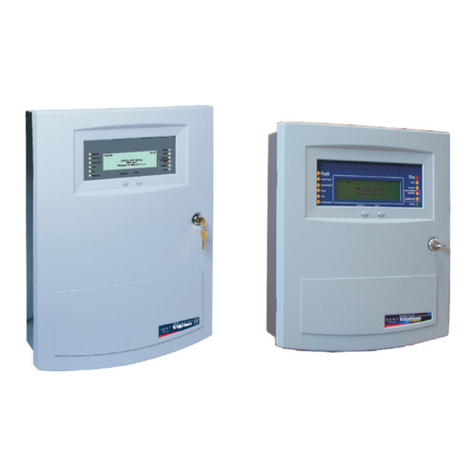
Honeywell
Honeywell Vigilon 4 loop Generic Commissioning Instructions
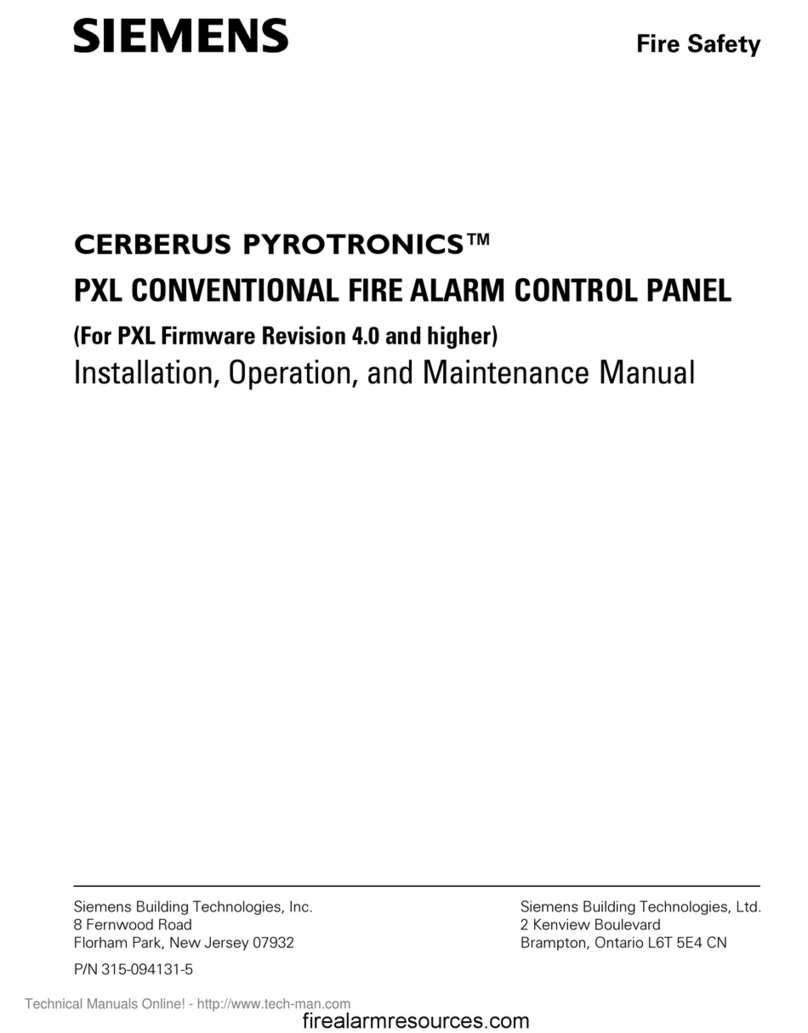
Siemens
Siemens CERBERUS PYROTRONICS PXL Installation, operation and maintenance manual

bolid
bolid SIGNAL-20P user manual
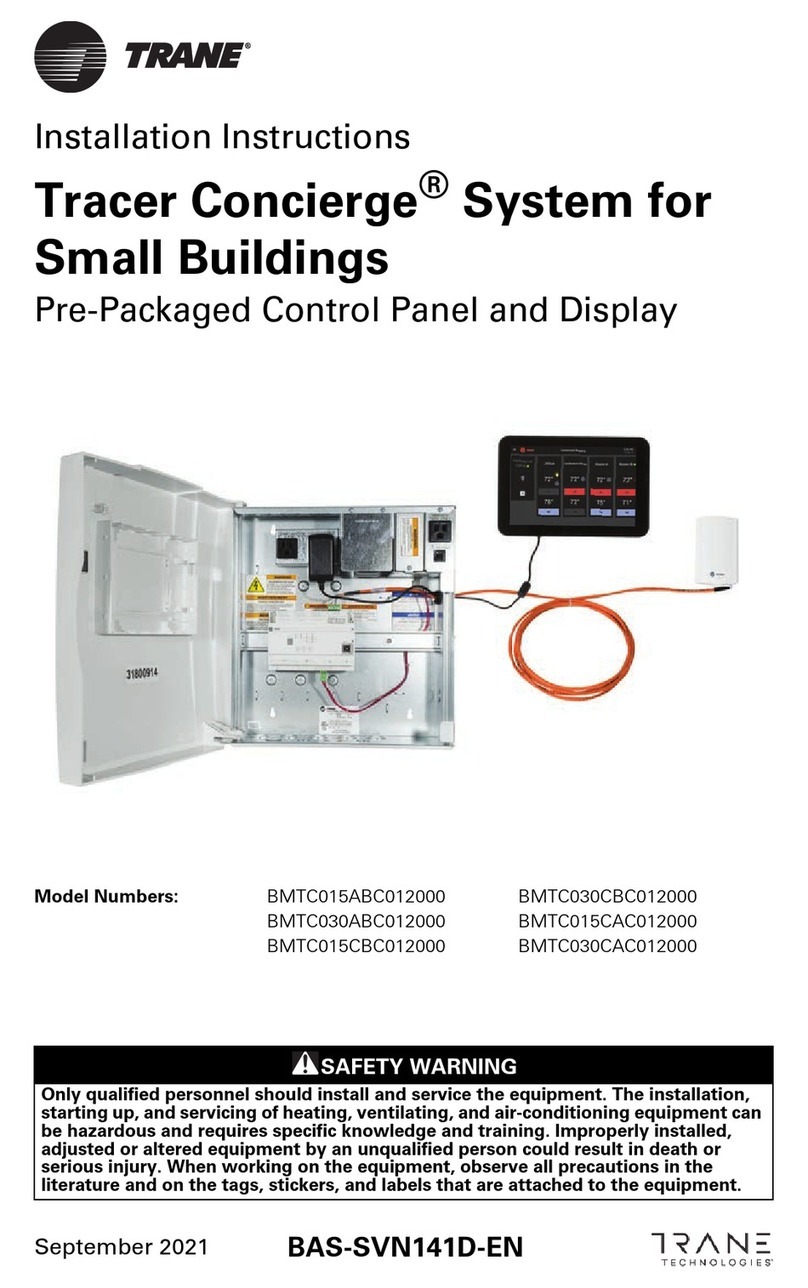
Trane
Trane Tracer Concierge BMTC015ABC012000 installation instructions
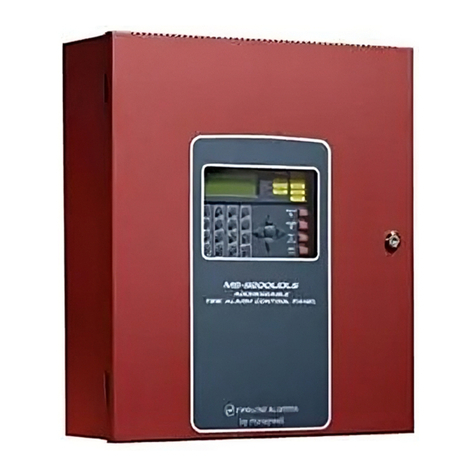
Honeywell
Honeywell MS-9200UDLSE manual
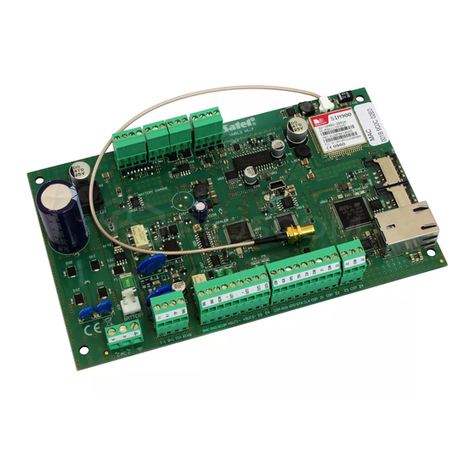
Satel
Satel Versa Plus Programming manual

